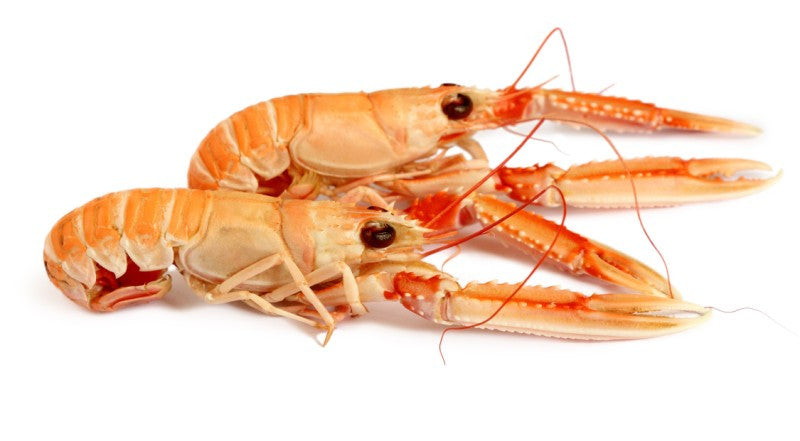
Langoustines: Some Cooking Suggestions and Health Benefits
Share
Langoustines are a succulent white shellfish. While they are closely related to the lobster, they are more the size of a large prawn. The scientific name of this shellfish is Nephrops norvegicus, which suggests that they were first found off the coast of Norway. However, the majority of langoustines caught today are from the cold waters of the northern Atlantic and the North Sea, off the west coast of Scotland in the Moray Firth and toward Iceland, in particular. They survive on burrowing in mud flats for five to twenty-five years.
Naturally pink in colour and turn a paler pink when being cooked, langoustines can be bought frozen, ready-prepared with their shell removed, although you can also get them live. To know if they are properly fresh, check if they have their legs and antennae intact and that they have almost jet-black eyes.
Although langoustines are seen as the poor cousins to lobsters, they offer a flavour that affords it a higher status. They have a more delicate yet intense sophisticated sweetness. You need to roast or boil fresh langoustines in well-salted water before you pull them from their shells. They can also be deep-friend in batter. Or, you can peel and poach them and prepare traditional Scampi Provençal.
Overcooking langoustines is a big no-no. To know if they are done, look at the meat under the tail, which can be seen through the light membrane covering it. It should be pale, translucent pink to a definite white. When cooling them, do not put them in cold water, as they will absorb the water and turn mushy. Another thing to remember is to gently reheat pre-boiled langoustines. Recooking them would cause them to toughen.
So what health benefits do you get from eating langoustines?
First, every serving of langoustines can provide you with 21 grams of protein. For you to meet your energy needs and build your muscles, the Institute of Medicine recommends that you consume 46 to 56 grams of protein every day. Protein is also needed for the production of essential enzymes and hormones and helps boost your immune system. Langoustines are also a great addition to a low-fat diet. A four-ounce portion of this shellfish only contains one gram of fat.
Additionally, langoustines are a good source of two important minerals: iron and calcium. A four-ounce serving of langoustines can give you eight percent of your daily recommended calcium intake. You need calcium not only to keep your bones and teeth strong but also to help muscles contract and expand, produce hormones and enzymes, and send messages through the nervous system. A serving of the shellfish also contains eight percent of the iron your body needs each day. Iron is essential for carrying oxygen from one body cell to another. It is also needed to maintain brain function since it helps supply oxygen to blood; the brain uses approximately 20 percent of the oxygen in the bloodstream. If you are following a low-sodium diet, you may have to be careful about consuming langoustines, though.
Treat yourself to some langoustine today, buy online from justcaught.co.uk
